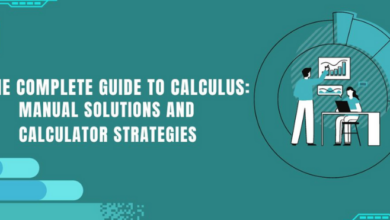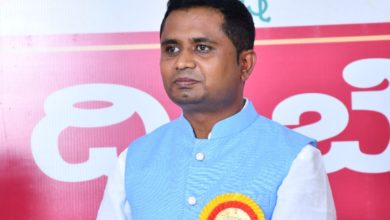Level of reasoning questions which are asked in banking exams is different from those asked in other competitive exams. Not only the difficulty level of the questions which are asked in banking exams is higher but the pattern of questions also keeps changing, at least from the past three years. The Level of questions that are asked in SBI PO exams is higher than any other banking exams. So, it is important to master this section in order to score well in SBI PO prelims exam.
We have provided the topics which are most commonly asked in reasoning section and some tips and guidelines to tackle/solve them.
- Puzzles and Sitting arrangement
This is the most important topic in reasoning section as most of the questions are asked on this topic. They may be time-consuming but rewarding as you get five correct answers in return.
Tips:
(i) Scan the puzzle to search for an entity (person etc.) that is most repeated in the puzzle and start solving the puzzle taking that entity as the reference point.
For example,
- Eight persons viz. A, B, C, D, E, F, G, and H are sitting around a circular table facing towards the center. F is an immediate neighbor of A and C. E sits third to the right of C. D sits second to the left of F. G is sitting second to the right of H. E is sitting opposite to F.
Sol. Since F is the most repeated entity in the puzzle, we will start by arranging F first.
(ii) It is important to code the given information effectively and write it on your solution sheet in order to avoid re-reading the sentences.
For example, F is an immediate neighbor of A and C can be written as,
(iii) Even if there is no limitation to the number of rough sheets you can use, it is important to write all the information given in the question in one particular space within your field of view.
(iv) Make sure you try all the possible cases as there might be more than one solutions to a particular question.
(v) Even if you are not able to obtain the complete solution/figure. Make sure you go through all the questions as there may be one or two questions which you can answer even with an incomplete solution/figure.
(vi) While solving a lengthy puzzle, you have to shift your eyes back and forth between the computer screen and your solution sheet. Due to that sometime you might end up searching for the sentence where you left and end up re-reading or skipping one or two sentences in the process which can lead you to an incomplete solution. To counter this problem, you can use the cursor of your mouse to scroll through the computer screen and stop it at the end of a particular sentence which you have already read.
- Coding/Decoding
Until a few years ago, these questions involved determining the code of a particular word by canceling out the common words. But recently, the makers have made a variation in the pattern in order to increase the difficulty level. In the new pattern of questions, there will not be any common words. The same logic is applied to code all the words and we have to find that logic in order to answer the question.
For example, “gradeup skills” is coded as- “7#K 19@H”. By close observation, we can see that the numerical part of the code represents the place value (in the alphabetical series) of the first letter of the word. (G-7, S-19) and the last letter of the code represents the reverse (A-Z, B-Y, C-X….) of the last letter of the word.
It will be very helpful to solve such questions if you memorize the place value and the reverse of each alphabet of the series.
| A | B | C | D | E | F | G | H | I | J | K | L | M | N | O | P | Q | R | S | T | U | V | W | X | Y | Z |
| 1 | 2 | 3 | 4 | 5 | 6 | 7 | 8 | 9 | 10 | 11 | 12 | 13 | 14 | 15 | 16 | 17 | 18 | 19 | 20 | 21 | 22 | 23 | 24 | 25 | 26 |
| Z | Y | X | W | V | U | T | S | R | Q | P | O | N | M | L | K | J | I | H | G | F | E | D | C | B | A |
- Syllogism
This is one of the easiest topics in reasoning if you know some rules. It involves determining a relationship between different entities using a Venn diagram. Make sure you prepare for the new pattern questions like reverse syllogisms or finding the conclusion which logically does not follow etc.
In reverse syllogism, we are required to find a set of statements which satisfy the given set of conclusions. In these questions, you can save time by eliminating options.
For example,
- Conclusions. Some bats are cats. No rat is ant.
(a) Some bats are pigs, some pigs are rats, some cats are rats, all the rats are cows, some cows are ants.
(b) Some bats are cats, all the cats are pigs, come pigs are cows, no cow is ant, all the rats are cows.
Since one of the conclusions involves the use of a negation and there are no negations used in option (a), we can eliminate that option.
- Inequalities
Also, one of the easiest topics, mathematical symbols (<, >, = etc.) are used to represent and determine the relationship between two or more entities.
Note: When there is no relationship between two elements and the two conclusions provided are mutually exhaustive, there will be either or case between the two conclusions.
For example, If it is given that A < B > C, then either A ≥ B or A < B is true.
- Data Sufficiency
In these questions, we have to choose the statements which are sufficient to answer the question. You need not waste your time in arriving at the final solution.
- Direction Based
These questions involve a person or an object moving in two-dimensional space and following different spatial directions. It is important that you draw a correct diagram as most of the candidates get confused between left and right or east and west.
- Blood relation
In these questions, we have to determine the relationship between family members. It is important that you develop a particular symbol of your choice and convenience to represent the male, female, married couples, brother-sister etc.
- Input-output
In these questions, a machine rearranges a set of word/number in a particular order in each step using a particular logic. We have to find out that particular logic by looking at the steps of the output.
Tip: Using initials instead of the whole word while writing the steps of the given input arrangement will save your time.
You can also determine the logic by looking at the first and last element of each step because in most of the cases words/numbers are arranged at the ends(leftmost/rightmost) in each step.
Important Tips for Reasoning section:
- While solving puzzles, it is important to read the sentences carefully, a slight error in reading will lead you to many wrong answers and you will end up losing more marks due to negative marking.
- While attempting reasoning section during the examination, you should start with those questions which are independent/less time-consuming like inequalities, syllogisms etc. For example, attempting a puzzle, in the beginning, may cause panic, if you took too much time or if you were unable to find the solution.
- Be it reasoning or math, the most important thing that you need to do in order to master a subject in practice. With practice, you will be able to develop your own shortcut methods and tricks to solve a particular question.
Download SBI PO exam preparation app to get free study material, notes, quiz, mock test, topic-wise English & other subject’s quizzes & previous year question papers of SBI PO exam.
Please also check our NCERT Solutions app which we have launched recently for Class 6 – Class 12.





